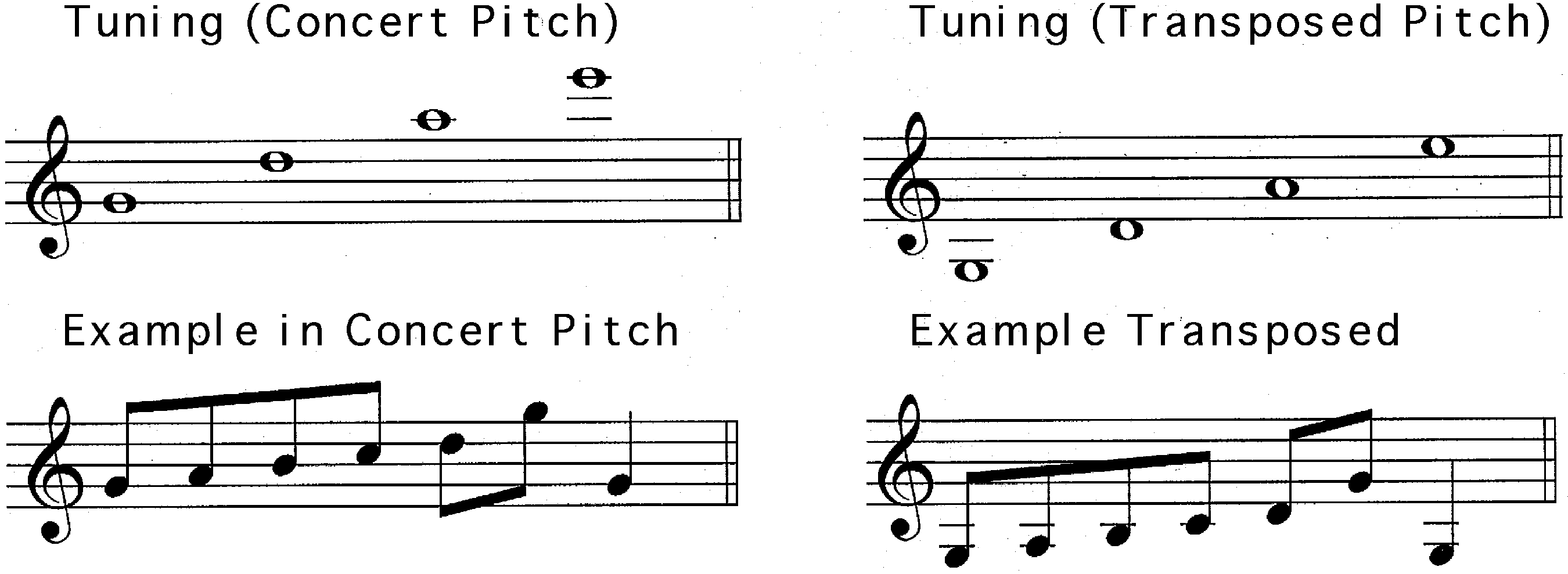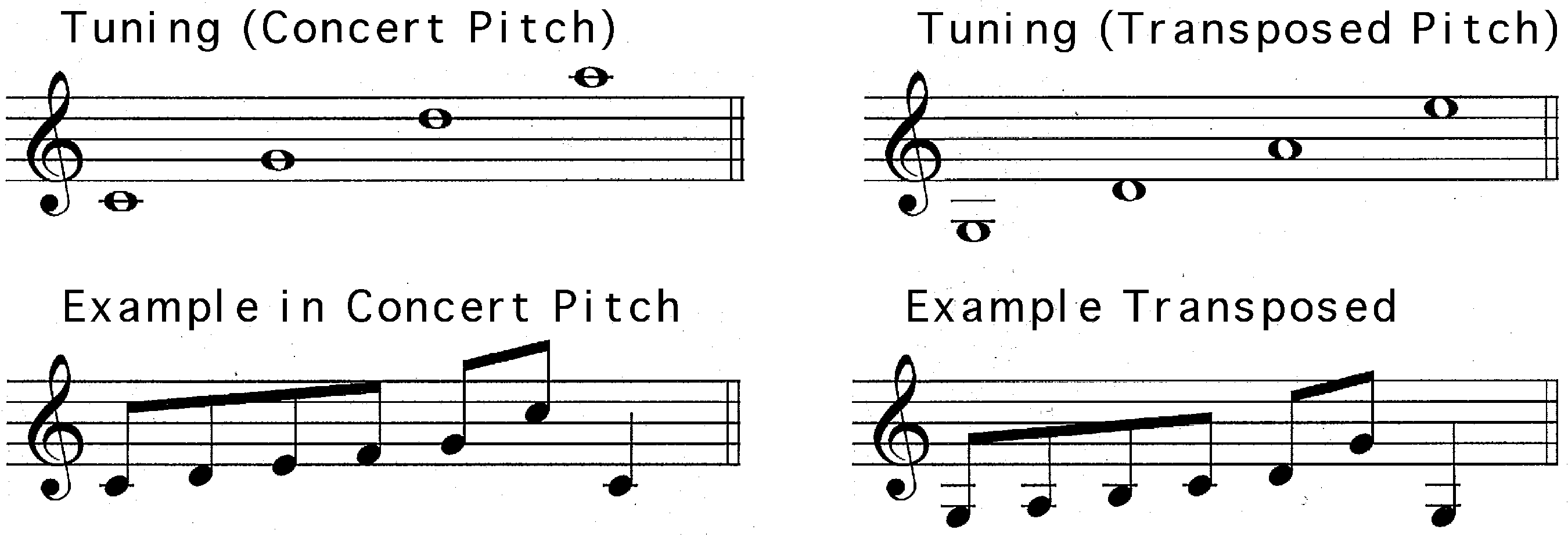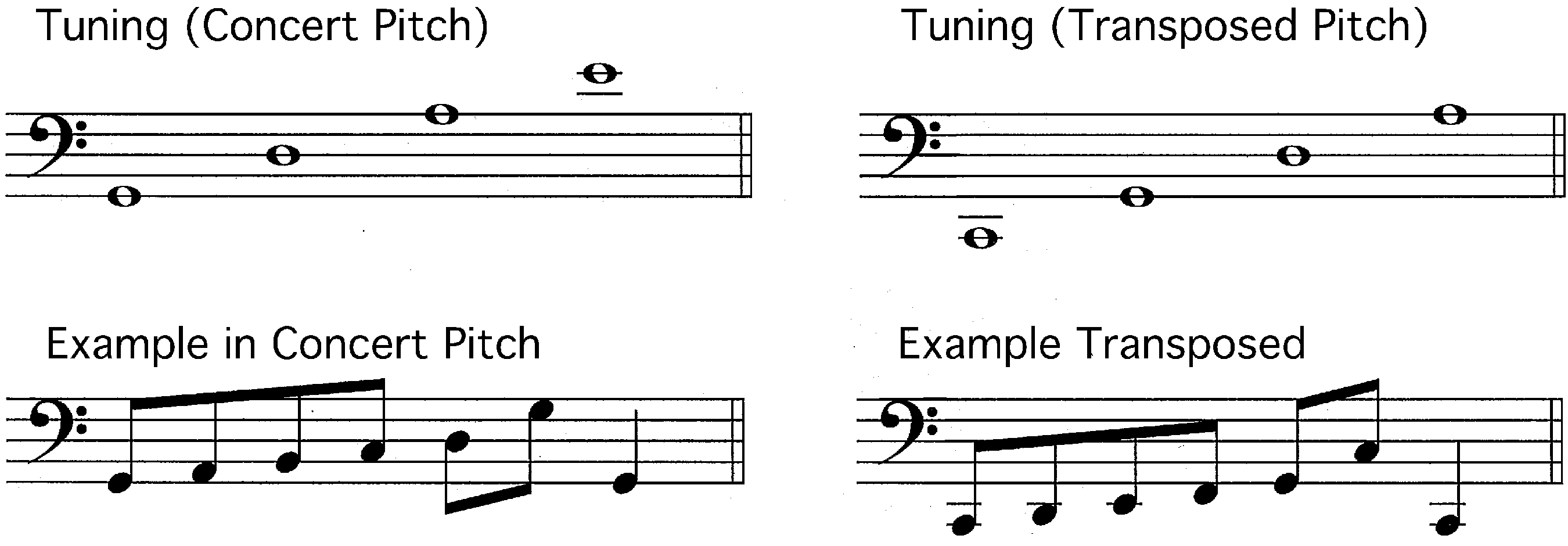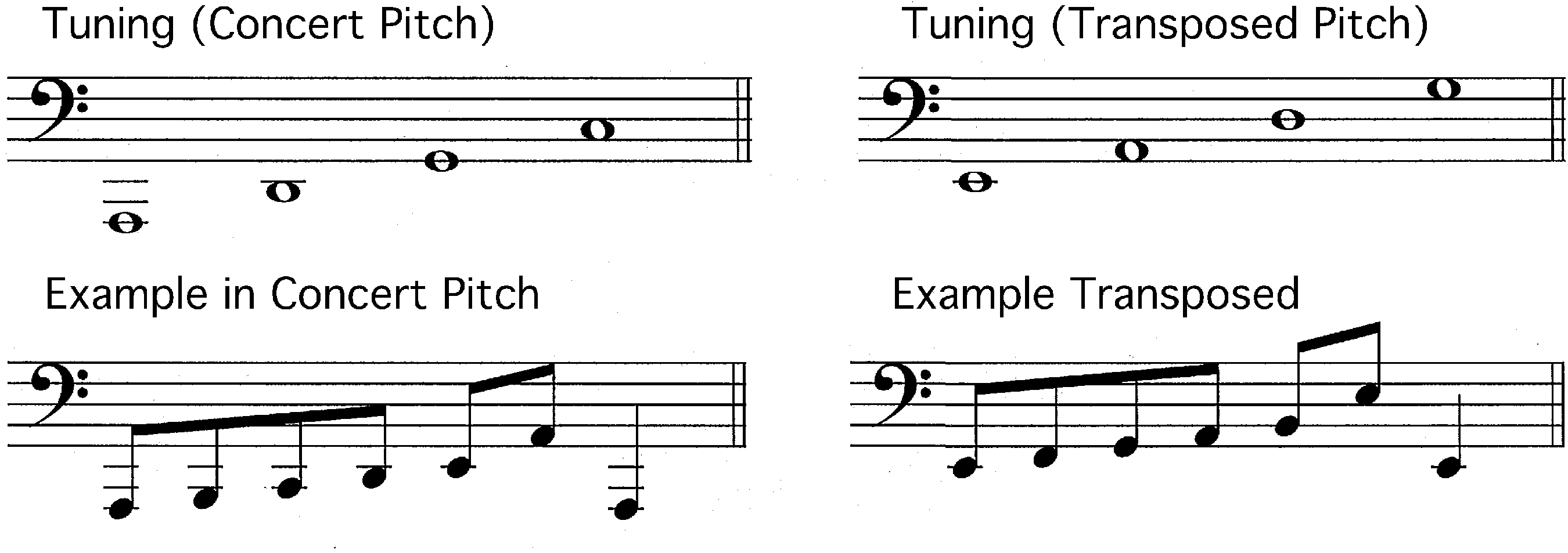The VIOLIN OCTET is a 20th Century development of a consort of eight finely matched instruments in a series of sizes and tunings to cover the range of written music, starting at the bottom with the oversized large bass tuned as a double bass and finishing at the top with the tiny treble violin tuned one octave above the violin.
This family of instruments represents the results of research into violin acoustics that started with the work of the well known physicist, Frederick A. Saunders as far back as 1937.
The object was to establish - through tests made on a series of excellent violins - some of the acoustic characteristics found in violins of excellent tone.
These tests were followed by ten years of experiment and development in the dimensions, fittings, and resonances of a large number of instruments. This work was accomplished by Dr. Carleen Hutchins and over 100 associates in the Catgut Acoustical Society.
From these experiments it has become possible, for the first time in string history since the viols, to create a whole family of acoustically matched instruments with violin tone qualities. The VIOLIN OCTET differs from the existing violin family of violin, viola, cello, and bass in which their chief acoustic characteristics are not only different from the violin but from each other.
 |
| Formal structure of Reich's Octet |
The eight instruments form a family with basic traits in common, but each member has its own individual personality. The homogeneity of sound is the result of adjustments in body length and other physical characteristics so that each instrument has its so-called main wood resonance and main air resonance near the two open middle strings (as is the case with the Heifetz Guarnerius violin). In the five higher instruments - Treble, Soprano, Mezzo, Alto, Tenor - the main wood resonance lies near the open second string, and the main air, or Helmholtz, resonance lies near the open third string.
 In the three lower instruments - Baritone, Small Bass, and large Contrabass - the Helmholtz air resonance is placed several semitones lower to suit the preferences of many performers.
In the three lower instruments - Baritone, Small Bass, and large Contrabass - the Helmholtz air resonance is placed several semitones lower to suit the preferences of many performers. Experimental musical evaluation of the Octet in England has, however, indicated a preference for the higher placement of the Helmholtz resonance in the lower instruments so as to give a lighter, more balanced consort sound. A Tenor and a Baritone have been built this way.
THE INSTRUMENTS:
TREBLE VIOLIN
The Treble Violin, tuned G-D-A-E, an octave above the violin, is the smallest and highest member of the Octet. In England it is called the Sopranino following the nomen datum of the recorder family. Its dimensions are approximately those of a quarter-size violin, but in construction it is quite different. In order to achieve the transposed violin sound, the Treble not only has extremely thick top and back plates, but extra large f-holes and strategically placed small holes in the shallow ribs so that its main resonances occur at the desired frequencies.
Michael Praetorius projected an instrument in this tone range, but without the high E-string, so that in effect there were only three strings. Since the string length must be at least long enough for a player to finger consecutive semitones securely, the E string (tuned to 1320 Hz) must be extremely strong and thin. A space-age material known as carbon rocket wire, with a tensile strength nearly twice that of the normal violin E string wire, is used for this purpose. Even so, this wire is close to the breaking point. No wonder Praetorius omitted it in his tuning of high treble!
The tone quality of the Treble violin provides an effortless brilliance on its two upper strings which can soar above the string choir, much like the piccolo cutting through the sound of a fully symphony orchestra. The two lower strings have a mature sound that can be exploited in combination with other instruments of the Octet. Performers have found that the individual timbre and short string length of the Treble Violin make possible a tremolo on intervals of up to an octave on any one string, and double stops of up to a twelfth on any two strings. Owing to its small size, it can be played equally well under the chin or rebec style, on the arm; giant leaps are possible with a little practice, accomplished through a small movement of the wrist. Many pieces from the conventional violin literature can be played with considerable facility on the Treble, sounding an octave higher.
The Treble Violin is included in many of the compositions written specifically for the Octet; one use is to add clarity and brilliance to the ensemble, especially playing on its upper strings in combination with the Soprano Violin. Several solo pieces have also been composed for the Treble.

A Note to Composers, Orchestrators & Copyists:
The Treble Violin part is ALWAYS transposed (sounding 8va).
The Treble Violin part is ALWAYS transposed (sounding 8va).
SOPRANO VIOLIN
The Soprano Violin or Descant, as it is called in England, is tuned an octave above the viola, C-G-D-A. It is a 20th Century version of the violino piccolo of the 16th and 17th Centuries in the same tuning, known mainly through works written for it by J. S. Bach. Two such works are "Wachet auf" and the first Brandenburg Concerto.
In the latter the Soprano Violin has been used with considerable success playing the part usually performed today on an oboe. As the highest member of several string quartets composed for Soprano, Mezzo, Alto, and Tenor Violins, the Soprano adds brilliance and roundness to the upper register. The sounds of such a quartet have been characterized as "the music of the gods."
In size and string length, the Soprano is comparable to a three-quarter violin, though it is somewhat broader in outline, with shallower ribs to keep its Helmholtz air resonance high enough to be at the desired frequency.

While most performers are comfortable reading transposed parts, many performers still prefer to read their parts in concert pitch. Therefore, for Soprano Violin it is customary to provide both a concert pitch part and a transposed part (sounding a Perfect 4th higher than written).
MEZZO VIOLIN
 The Mezzo Violin is an enlarged version of the conventional 14" (35.5 cm) violin, having a body length of 15" (38.2 cm), but maintaining the standard nut-to-bridge string length. During the early history of the string family, makers such as Stradivari and Maggini also produced large violins; thus, this idea is not new.
The Mezzo Violin is an enlarged version of the conventional 14" (35.5 cm) violin, having a body length of 15" (38.2 cm), but maintaining the standard nut-to-bridge string length. During the early history of the string family, makers such as Stradivari and Maggini also produced large violins; thus, this idea is not new. With top and back plate areas considerably larger than in the normal violin, the Mezzo produces more power, particularly on its lower strings. In order to maintain the Helmholtz resonance up near the open D string, the ribs are about half the height of those in the conventional violin.
The Mezzo is used today by concert artists and orchestral players who find its extra power and wide dynamic range a distinct advantage, particularly in combinations with piano or wind instruments.

Always provide the mezzo part in concert pitch.
ALTO VIOLIN
The Alto Violin is essentially an enlarged viola, and like the viola is tuned C-G-D-A. The Alto is similar in size to the early so-called tenors made by Stradivari and the Amatis. Its body length of 20" (50.8 cm) poses a definite problem when played under the chin, although several professional violists do play the Alto this way in solo and orchestra work. Others play it cello fashion, on a long peg, giving the performer the advantage of greater facility in the upper positions where thumb technique can be used. In response to musicians' requests, the string length has been adjusted to 16-3/4" (42.5 cm) to facilitate viola fingering.
.jpeg) The additional clarity and power, and the full dynamic range of the Alto throughout its entire compass caused Leopold Stokowski to say: "That is the sound I have always wanted from the violas in my orchestra. No viola has ever sounded like that before - it fills the whole hall." Violist William Berman has, with great satisfaction, played an Alto exclusively for the last eight years in solo recitals, orchestras, and string quartets.
The additional clarity and power, and the full dynamic range of the Alto throughout its entire compass caused Leopold Stokowski to say: "That is the sound I have always wanted from the violas in my orchestra. No viola has ever sounded like that before - it fills the whole hall." Violist William Berman has, with great satisfaction, played an Alto exclusively for the last eight years in solo recitals, orchestras, and string quartets.
TENOR VIOLIN
The Tenor Violin, tuned G-D-A-E, an octave below the normal violin, is similar in size and playing technique to a three-quarter cello, but has shallower ribs, giving it the appearance of an enlarged violin. This gives the Tenor a singing clarity and brilliance an octave lower, not heretofore available in this range. It not only fills the gap between the conventional viola and cello, but makes available new sounds, suitable for solos as well as ensemble performance with other strings or wind instruments and the human voice.
 |
| Pro Arte Quartet |
Many early compositions for the old tenor apparently still remain to be unearthed from archives. A number of modern compositions have been especially composed and arranged for the new Tenor Violin.

While most performers are comfortable reading transposed parts, many performers still prefer to read their parts in concert pitch. Therefore, for Tenor Violin it is customary to provide both a concert pitch part and a transposed part (sounding a Perfect 5th higher than written). Again, most performers are converted 'cello players, so write the part as you would for violoncelli (primarily in bass clef).
The Baritone Violin, tuned C-G-D-A like the cello, has a nearly comparable string length but larger body dimensions. It is reminiscent of the large cellos of the 15th and 16th Centuries, many of which have been cut down (particularly those of Montagnana and Maggini).
Since the Baritone's resonances are placed lower relative to string tuning than those of the cello, the tones on its two lower strings are unusually clear and powerful. However, its A string resonances are not more powerful than its lower tones, as is true in the normal cello.
According to several concert cellists, the Baritone has all the power of a cello but possesses greater clarity and a larger tone on its two lower strings - features particularly noticeable when playing pizzicato. The Baritone not only blends well with the other members of the Octet, but in the symphony orchestra it can enhance the sound of the entire cello section. Several cellists are using the Baritone in sonata recitals where it balances well with the piano, particularly in the lower range. One professional cellist commented: "This is the first time I have been able to talk back to the piano in a Brahms sonata."

Always provide the Baritone Violin part in concert pitch, written as you would for violoncelli.
SMALL BASS VIOLIN
The Small Bass Violin is tuned A-D-G-C, a fourth above the conventional orchestral bass viol (double bass). It is about the size of a three-quarter bass, with similar string length but with the rounded shoulders and swelled back of the violin family.
Plate resonances are tuned by methods similar to those used in violin, viola, and cello construction; consequently, its tones are clear and responsive throughout its compass. Bass players have found that the Small Bass responds easily, and has great resonance, with an exceptionally fine pizzicato. They like its ability to blend in ensemble playing but are particularly eager to explore the possibilities of the Small Bass as a solo instrument.

While most performers are comfortable reading transposed parts, many performers still prefer to read their parts in concert pitch. Therefore, for the Small Bass Violin it is customary to provide both a concert pitch part and a transposed part (sounding a Perfect 5th lower than written).
CONTRABASS VIOLIN
The Contrabass Violin, tuned E-A-D-G, is even larger than its conventional counterpart, the double bass; it has a body length of 51" (130 cm) but a string length of only 43" (110 cm) - well within conventional measure. Its impressive size, the tuning of the plates, and its comparatively light construction cause the lower notes to produce organ-type sonorities.
The violin shape of the upper bouts, as well as its overall size, make the Contrabass Violin less practical for playing in high positions. It is, however, magnificently suited for bass parts which do not require the player to reach beyond the 3rd or 4th position. Its rich, saturated bass tones can supply a solid "bottom cushion" to the sound of any symphony orchestra.
In the 14th and 15th Centuries there were at least 6 or 7 members of the violin family, but with the exquisite development of the violin and the literature for string quartet in the 16th and 17th Centuries, the other instruments fell into disuse and are now in museums. Over the years there have been many unsuccessful attempts to try to recreate a balanced set of 7 or more instruments with fine tone qualities.
Now for the first time, creative violin making and a consistent theory of acoustics applied to the violin family by Dr. Carleen Hutchins and her associates have made this concept a reality.
When Leopold Stokowski, the famous conductor, heard the first public concert of the Octet at the New York 92nd Street YM-YWHA in 1965, he said: "... a major step in renovating the strings, for the first time in 200 years, has been taken ... and BRAVO!"
“Perec’s Inventory” (2006-2012). Bil Smith Composer
For Violin Octet and Audio Engineer; String Quintet (2 Violins; Viola, Cello, Bass Viol) and Audio Engineer; with Solo Cello.
Recorded May 5, 2013 at The Winter Garden Theater.
LISTEN ON SOUNDCLOUD:
https://soundcloud.com/bil-smith/perecs-inventory-2006-2012-bil
.jpeg)



No comments:
Post a Comment